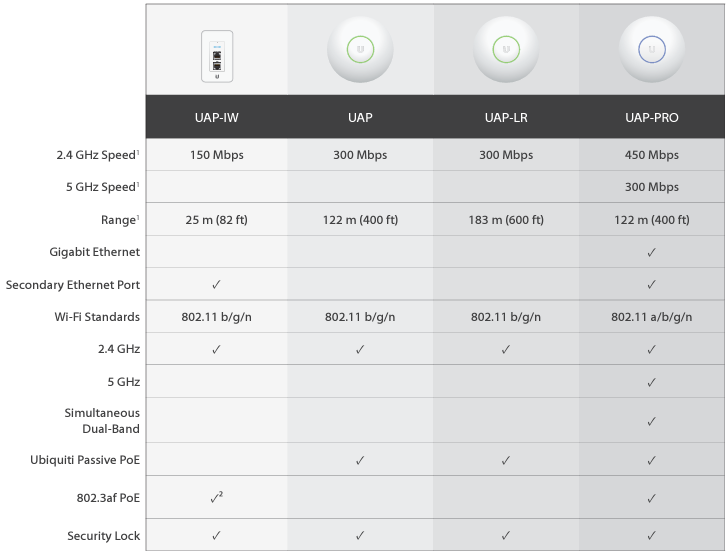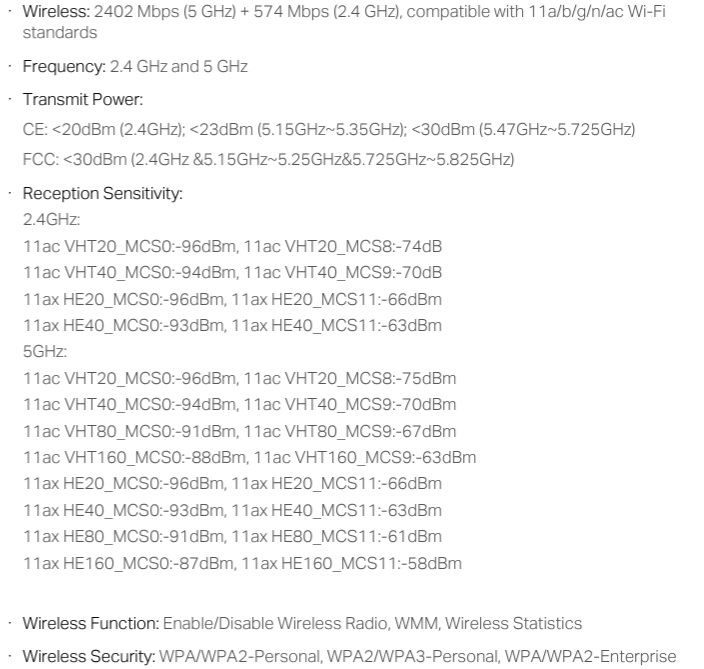|
A Buyer's Guide : WiFi Routers and Access Points
Have you ever found yourself puzzled over which WiFi router or access point to choose for your home network? With the myriad of options available, each boasting different features, designs, and capabilities, making the right choice can feel like navigating a labyrinth. It's not just about picking the one with the highest speed or the latest standard; it's about understanding how these devices fit into the fabric of your daily life, ensuring seamless connectivity for work, entertainment, and
everything in between.

Let's look into the world of WiFi routers and access points, breaking down the technical jargon into easy-to-understand concepts. We'll explore how the design of antennas can impact your WiFi performance, what signal strength really means for your connectivity, and why the choice of hardware could be the key to unlocking the full potential of your home network.
Whether you're a tech enthusiast or just looking for ways to boost your home WiFi, this guide will provide you with the insights you need to make an informed decision. Let's embark on this journey together, and find the perfect WiFi setup that meets your needs, enhances your digital experience, and transforms your home into a connectivity haven.
Evaluating WiFi Routers and Access Points
When it comes to setting up a WiFi network, choosing the right hardware is crucial for ensuring reliable and fast internet connectivity. WiFi routers and access points are the backbone of any wireless network, serving as the central hub through which devices connect. Here's how to make an informed decision when evaluating WiFi routers and access points:
- Understand Your Needs: The first step is to understand the specific needs of your environment. Consider the size of the area you need to cover, the number of devices that will connect, and the types of activities those devices will be performing (e.g., streaming video, online gaming, general browsing).
- Speed and Standards: Look for devices that support the latest WiFi standards, such as WiFi 5 (802.11ac) or WiFi 6 (802.11ax). These newer standards offer improved speeds, efficiency, and support for more devices. The maximum speed a router can support is a key factor, but remember that real-world speeds will often be lower.
- Frequency Bands: Dual-band routers offer both 2.4 GHz and 5 GHz frequencies, providing a balance between range and speed. Tri-band routers add an additional 5 GHz band, which can help reduce congestion if you have many devices.
- Antennas and Coverage: The number and design of antennas can impact the range and performance of the WiFi signal. More antennas can help direct the signal more effectively, improving coverage and speed, especially in multi-story homes or larger areas.
- Security Features: Security is paramount. Look for routers and access points that support the latest security standards like WPA3. Additional features such as built-in firewalls, guest networking, and parental controls can also be beneficial.
- Ports and Connectivity: Consider the number and types of ports provided. Ethernet ports are crucial for wired connections, and USB ports can be useful for sharing printers or storage devices over the network.
- Ease of Use and Management: User-friendly interfaces and mobile apps for setup and management can make configuring and maintaining your WiFi network much easier. Features like parental controls, device prioritization, and guest network management should be straightforward to use.
- Price: Balance your needs with your budget. More expensive routers typically offer better performance, coverage, and features, but mid-range models can also provide a good balance for most households.
Understanding Datasheet
With all of the factors listed above, the next step would be to search through the datasheets of various products. Here I want to shows you some examples of datasheets and try to understand what the datasheet says. I don't have any specific criteria on which datasheet to share here. I just picked what I can get easily from web search. The purpose of this section is to help you to get familiar with specification/datasheet of WiFi Access point hardware. You may see this kind of information from
datasheet you can get from internet or Boxes of WiFi AP(Access point) at electronics shop. Here I am trying to review the datasheet summarized in short form. As your experience and knowledge improves, try to look into the datasheets with more detailed technical information as listed in the reference. Reading the various datasheet and trying to understand the details can be a good way of studying / learning the technology.
Example 1 :

Source : UniFi
The table itself shows well summarized and comparitive information for four different product and you may not need much of the additional information. But when you read specification, it would be good to think verbally in mind as below. Especially it would be good practice to try to define the features and best deployment on your own.
- UAP-IW:
- 2.4 GHz Speed: Up to 150 Mbps
- Range: Up to 25 meters (82 feet)
- Features: Has a secondary Ethernet port but lacks 5 GHz support and is not dual-band.
- Best Deployment: Due to its lower speed and shorter range, the UAP-IW is best suited for small homes or offices where high performance is not critical.
- UAP:
- 2.4 GHz Speed: Up to 300 Mbps
- Range: Up to 122 meters (400 feet)
- Features: Single-band 2.4 GHz operation with support for 802.11 b/g/n standards.
- Best Deployment: This model is suitable for medium-sized homes or small offices where 5 GHz band support is not a necessity.
- UAP-LR (Long Range):
- 2.4 GHz Speed: Up to 300 Mbps
- Range: Up to 183 meters (600 feet)
- Features: Similar to the UAP but with extended range, suitable for 802.11 b/g/n networks.
- Best Deployment: The UAP-LR is ideal for larger spaces that require broader coverage, such as mid-sized offices or outdoor spaces where the 5 GHz band is not a requirement.
- UAP-PRO:
- 2.4 GHz Speed: Up to 450 Mbps
- 5 GHz Speed: Up to 300 Mbps
- Range: Up to 122 meters (400 feet)
- Features: Dual-band operation with support for 802.11 a/b/g/n standards, Gigabit Ethernet, and both Ubiquiti Passive PoE and 802.3af PoE.
- Best Deployment: With its higher speeds, dual-band support, and advanced power features, the UAP-PRO is well-suited for professional environments that demand higher performance, such as busy offices, hospitals, or educational institutions.
Example 2 :

Source : Amazon
- Wireless Speeds:
- The device can reach speeds up to 2402 Mbps on the 5 GHz band and up to 574 Mbps on the 2.4 GHz band. This high-speed capability makes it well-suited for bandwidth-intensive tasks like HD video streaming, online gaming, and large file transfers.
- Frequency Bands:
- By operating on both 2.4 GHz and 5 GHz, the device offers the flexibility of longer range on 2.4 GHz and higher speeds on 5 GHz, making it versatile for different deployment scenarios.
- Transmit Power:
- The device adheres to regional transmit power regulations, with CE limits for Europe and FCC limits for the United States. This compliance ensures the device can be used legally in different regions without interfering with other devices or services.
- Reception Sensitivity:
- The device has various sensitivity levels for different modulation and coding schemes (MCS) on both frequency bands. Higher sensitivity can lead to better performance at longer distances or in environments with obstacles.
- Wireless Functions and Security:
- The device offers the ability to enable or disable the wireless radio, supports WiFi Multimedia (WMM) for quality of service, and provides wireless statistics for network management.
- For security, it supports WPA/WPA2-Personal and Enterprise, as well as the latest WPA3-Personal and Enterprise standards, ensuring robust security for both home and business networks.
- Best Deployment Scenarios:
- Given the high-speed capabilities, advanced reception sensitivity, and strong security features, this WiFi device is ideal for a wide range of environments:
- Home Use: For high-speed internet access, streaming, and gaming.
- Office Use: Can support a large number of devices and high data throughput for business applications.
- Hospitals and Schools: Reliable connectivity and robust security for sensitive environments.
- Public Spaces: Can handle high-density settings with many simultaneous users, such as cafes, libraries, or retail outlets.
Reference
|
|


